.png) |
| Rendered by Chad Krouse, 2024. |
Given all my research regarding the heraldic work of
Pierre de Chaignon la Rose (1872-1941), I knew at some point I would need to examine and understand the heraldry of Harvard and la Rose's involvement. One can hardly mention la Rose's name and not dive into his work for the university's tercentenary celebration. For this article, however, I will focus on some of the origins of Harvard's arms while highlighting a few artifacts from la Rose's work with the university.
Blue for Harvard?
Like most folks, I simply had no idea that Harvard's livery colors came so late in university's history. Allow me to share my findings.
On December 27, 1643, the Overseers of Harvard College formally adopted a seal with a coat of arms for the young college in Cambridge, Massachusetts. The arms within the seal would bear three open books inscribed with the motto,
veritas. The tinctures, or colors for the arms, were never codified. Why? Likely because the seal would have been engraved, and I can only image how expensive a colored painting of the seal and arms would have been at the time.
According to Hammond (1981), the first instance when red was used in the arms occurred in 1753 for a diploma case bearing Benjamin Franklin's honorary degree. Somehow, then, red disappeared. When the university celebrated its bicentennial in 1836, a flag with a blue field along with those open and inscribed books appeared on the scene (Hammond, 1981, 262). Blue?
 |
Rendering of Harvard's Bicentennial Flag of 1836,
by Chad Krouse, 2024. |
Fast forward 22 years.
An auspicious event occurred on the riverbanks of the Charles River in 1858 requiring clear identification for Harvard's crew team. Red handkerchiefs were purchased for the team to tie around their heads in order to help spectators spot their boys on the water (Hammond, 1981, 262). The handkerchiefs clearly worked.
On June 8, 1858, the Harvard Corporation codified the blazon for the university's arms and the field was officially red (Hammond, 1981, 262). Thus, the primary purpose of heraldry won the day, clear identification of the bearer remains paramount. The blazon for the arms of Harvard University: Gules, three open books edged with two clasps Or thereon inscribed Veritas.
Red is Red
When the Corporation of the University of Pennsylvania officially adopted arms on June 20, 1932--to become effective on July 1, 1933--la Rose was consulted and provided a few observations for the committee responsible for the final design.
"Gules in heraldry is bright red--heraldry knows nothing about crimson, cherry, etc. which is purely a livery detail. In one's liveries (and athletic colours and academic hoods come under that head) one may establish any shade or tone of a colour one chooses, but not so in heraldry...One may fixe a 'blazon' for all time...but every subsequent painter, carver, or die-cutter is wholly at liberty to carry out the blazon in his own manner...In other words, the actual draughtsmanship of heraldry is a very flexible thing, and an heraldic composition is good or bad according to the disposition and colouring of its charges, not their draughtsmanship" (The Pennsylvania Gazette, 1933, 2-4).
It's likely the crimson reference was aimed at Harvard which insists on using crimson within its coat of arms.
The graphic above illustrates two variations of the arms using bright red (Gules) and a darker shade for crimson. La Rose's observation regarding how the color red differs in one's coat of arms from athletic colors is a critical point often missed by academic institutions insisting on color conformity.
Bookplate Designs
La Rose was famous within Harvard Yard for his "decorations" and design capabilities. In fact, his earliest know heraldic work can be found among Harvard's social clubs.
 |
| The bookplate of the Digamma Club, nicknamed the Fox Club, designed by la Rose. Image is from Ward (1915) page 122. |
La Rose was something of keen designer of heraldic bookplates. In 1902, la Rose designed the bookplate for the Digamma Club, nicknamed the Fox Club. Based on the hatching in the above image, the arms la Rose designed for the club are blazoned: Vert, a fox rampant Or holding in dexter paw the letter F Or. These arms are truly fascinating and the only instance that I can think of where an actual letter is used as a heraldic charge.
The Fox Club's bookplate is but one example of la Rose's early work for many of the social clubs at Harvard.
 |
Ex Libris of Harvard College Library, designed by la Rose in 1913. Image courtesy of the Special Collections Department, University of Delaware Library.
| |
|
La Rose designed several bookplates for Harvard's library, using various shield shapes and arrangements in his work. The above image is one example of la Rose's work for the library executed in 1913. Harold Wilmerding Bell (1885-1947) and la Rose were close friends, and I could image this bookplate was somewhat special for la Rose to design. I am particularly drawn to la Rose's arrangement of Harvard's arms and how he placed Bell's arms above in the cartouche.
Based on the hatching seen in this bookplate, the arms of Harold Wilmerding Bell are blazoned: Sable, three bells two and one Argent and three mullets of six points one and two Or. Bell's bookplate is but one example of a number of designs la Rose created for Harvard's library.
An Official University Flag
By 1918 we see something new and unusual from la Rose in relation to any of his heraldic work for Harvard--an armorial flag. What is an armorial flag? Armorial flags are heraldic ensigns appropriated for outdoor use and typically used by corporate bodies. Sometimes called "banner of arms," the design from within the shield is merely laid out in a rectangular form with a ration of 2:3. However, the flag of the corporate sole--and its foundations--are rendered longer in length to show its importance in relation to any other flags. Thus, I prefer the term armorial flag to describe this method of flying heraldry--it is by far my favorite.
 |
| Image from Harvard Alumni Bulletin (1918, March, 17) page 428. Click image to enlarge. |
The Harvard Alumni Bulletin published on March 7, 1918 la Rose’s design for a new flag which the Harvard Corporation adopted. Based on my research to date, Harvard's design for a banner of arms is la Rose's first known work in this area of heraldry. I am quite positive more examples exist, buried deep within institutional archives. However, la Rose's flag design in 1918 marks a beginning (as we know now) of a new offering to his clients and numerous academic institutions would purchase his designs for armorial flags.
 |
Emblazonments showing the layout of an
armorial flag for Harvard. Rendered by the author. |
The graphic above illustrates the process of designing an armorial flag or banner of arms. It's quite simple, especially in the case of Harvard, for translating the design. I will note that when arms include chiefs, chevrons, or more complex designs, rendering the ratio and scale can present some challenges. At the beginning of this article, I included my take on the armorial flag of Harvard using their "crimson" hex colors. Harvard's arms are simple and beautiful, my favorite design from the Ivies.
.png) |
Harvard University.
Rendered by Chad Krouse, 2024. |
Below are several armorial flags related to Harvard that I rendered recently--all designed by la Rose.
 |
Harvard Law School. These arms have been retired as the school adopted a new design.
Rendered by Chad Krouse, 2024. |
 |
Harvard College.
Rendered by Chad Krouse, 2024. |
 |
Harvard Divinity School.
Rendered by Chad Krouse, 2024. |
 |
Kirkland House, Harvard. These arms have been retired as the house adopted a new design,
Rendered by Chad Krouse, 2024. |
 |
Harvard Graduate School.
Rendered by Chad Krouse, 2024. |
 |
Adams House, Harvard.
Rendered by Chad Krouse, 2024. |
 |
Lowell House, Harvard.
Rendered by Chad Krouse, 2024. |
For now, we'll pause here regarding la Rose and Harvard--there's still much more to unpack and analyze.
Works Cited
Hammond, M. (1981, July). A Harvard armory: Part 1. Harvard Library Bulletin, 29(3), pp. 261-297.
Harvard Alumni Bulletin. (1918, March, 17). Drawing of the new Harvard banner. Harvard Alumni Bulletin, 20(23), 428.
Ward, H.P. (1915). Some American college bookplates. Champlin Printing.
.png)

.png)
.png)
.png)

.png)
.png)




.png)
.png)




.png)

.png)

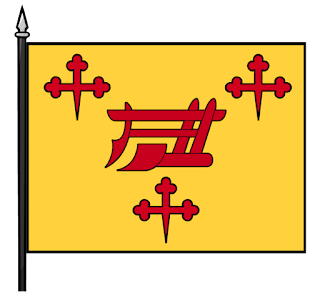




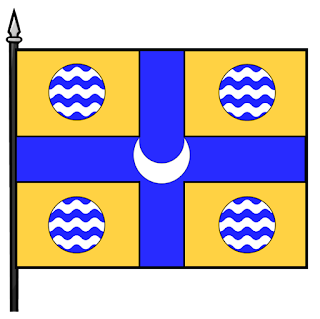
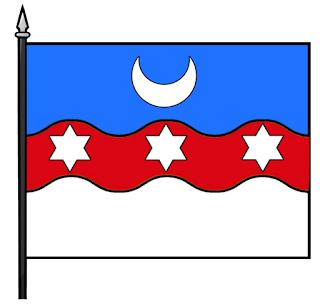
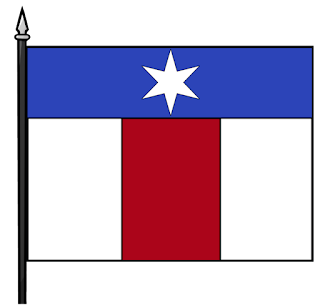

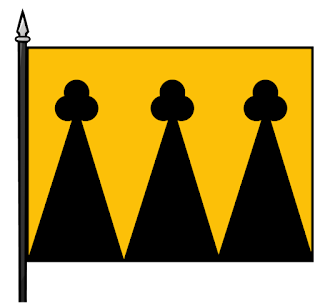
.png)






.png)









